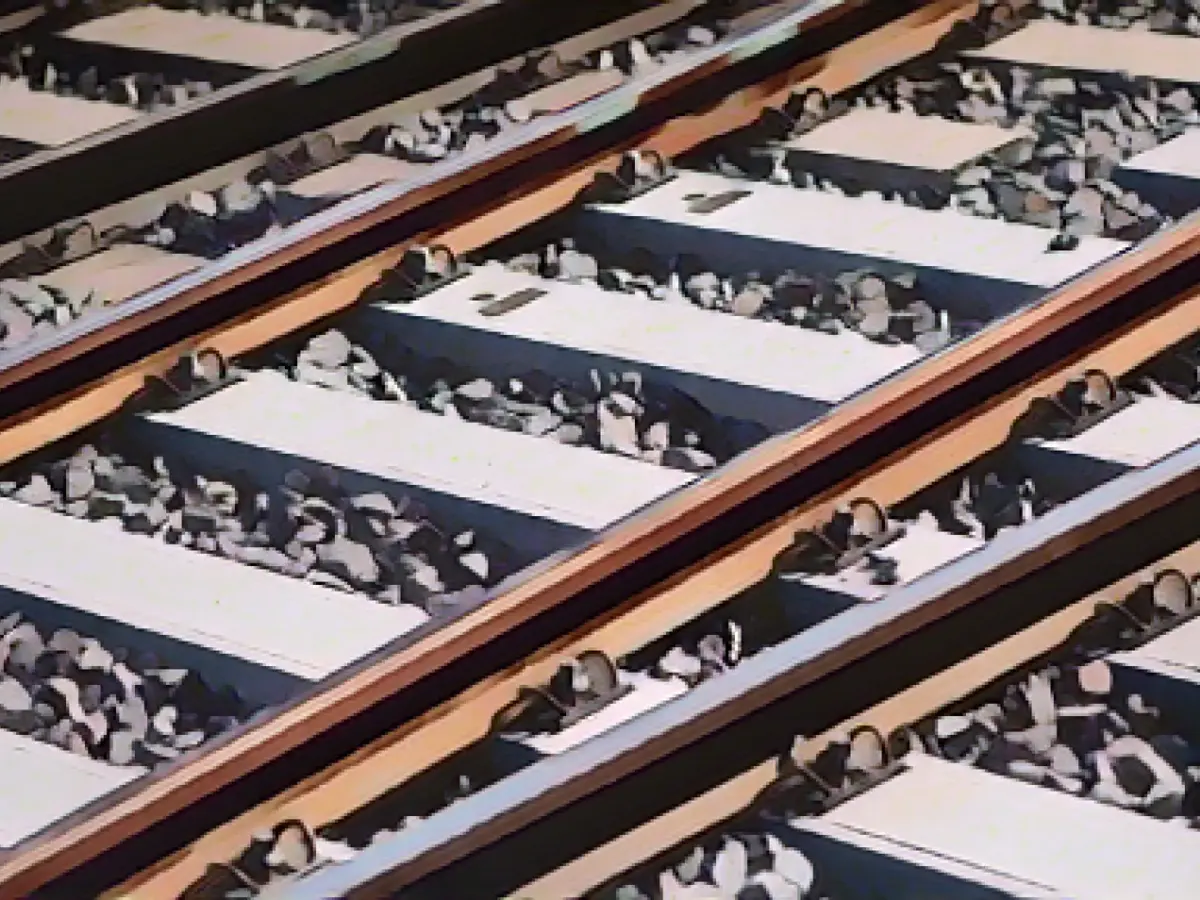Sluggish Rail Progress in Lusatia: A Setback for Federal Plans
The federal government's ambitious rail projects in Lusatia are facing a significant hurdle. Delays of up to three years from their initial 2021 targets have been reported for various projects, according to a recent reply from Germany's Federal Ministry of Transport to left-wing Bundestag member Christian Görke, disclosed to the German Press Agency.
Two years ago, the Berlin - Cottbus - Weißwasser - Görlitz line's planning completion was still scheduled for 2031. However, the Ministry has now pushed back this project to 2034, with Deutsche Bahn expecting to commission the line in 2040.
Additionally, the plans for the electrification of the Cottbus-Forst line have been postponed from 2026 to 2029. The final plans for the Lübbenau-Cottbus line's expansion have also been delayed by one year, from 2024 to 2025, while the plans for the Graustein-Spreewitz line's expansion have been extended from 2030 to 2032. The 2021 inquiry, detailing the project implementation years, is not listed in the current response.
The Bundestag approved a package of measures in October 2023 to expedite approval procedures in the transport sector. Construction projects on highways and railways are now expected to begin more swiftly, aiming to mitigate bottlenecks more quickly. Numerous procedures, including planning and approvals, will be simplified and sped up, as emphasized by Federal Transport Minister Volker Wissing (FDP).
However, Lusatia's left-wing politician Görke described the transport ministry's response as a "kick in the gut" for the entire region. He pointed out that rather than expediting planning, the delay in completing these projects was obscenely extending their implementation periods. Görke criticized the lack of progress in rail expansion despite the construction of a state-of-the-art railroad plant in Cottbus.
Görke argued that additional planning capacity for rail infrastructure is crucial to overcome the "bottleneck planning backlog" at DB. He suggested establishing a cross-state planning company collaborating with DB to focus on specific Lusatia projects between the states of Brandenburg, Berlin, and Saxony.
Insights:
While the pace of rail progress in Lusatia remains slow, various factors contribute to the bottlenecks and delays. These factors may include the complexities of high-speed rail link projects, infrastructure overhaul requirements, public participation and environmental concerns, and general infrastructure challenges facing the region.
- High-Speed Rail Link Delays: Planned high-speed rail link projects, such as the Dresden-Prague high-speed rail link, may involve lengthy coordination and legal challenges, potentially diverting resources and attention from rail projects in the region.
- Infrastructure Overhaul: Planned overhauls of infrastructure like the Panenská and Libouchec tunnels in the Czech highway system might conflict with rail projects in the Lusatia region due to logistical challenges and temporary closures.
- Public Participation and Environmental Concerns: Ongoing projects, such as the lithium mining project in Cínovec, may necessitate extensive public engagement, including comprehensive environmental evaluations and community input, which could indirectly contribute to delays.
- General Infrastructure Challenges: Other infrastructure challenges, such as the refurbishment of the Beneš Bridge in Ústí nad Labem and the closure of the bridge in Mojžíř, could reflect wider infrastructure maintenance needs in the region.
- Sustainable Construction Initiatives: The regional focus on sustainable construction and climate protection might influence broader infrastructure development priorities, potentially impacting rail projects through resource allocation and environmental considerations.
Ultimately, understanding these factors might help balance priorities, streamline planning, and eventually accelerate rail progress in the Lusatia region.








